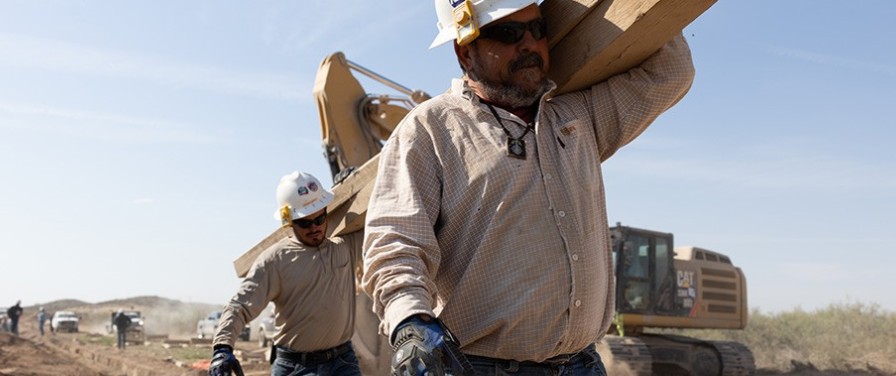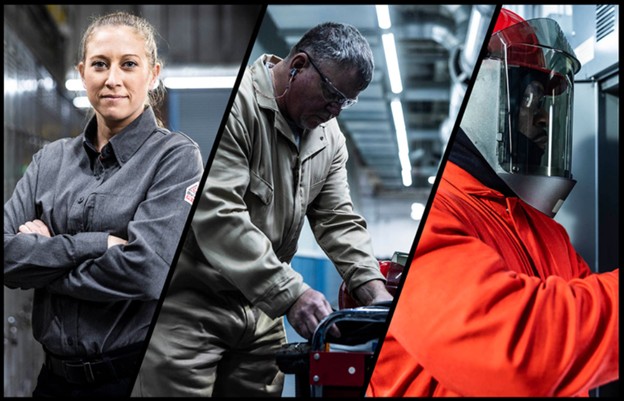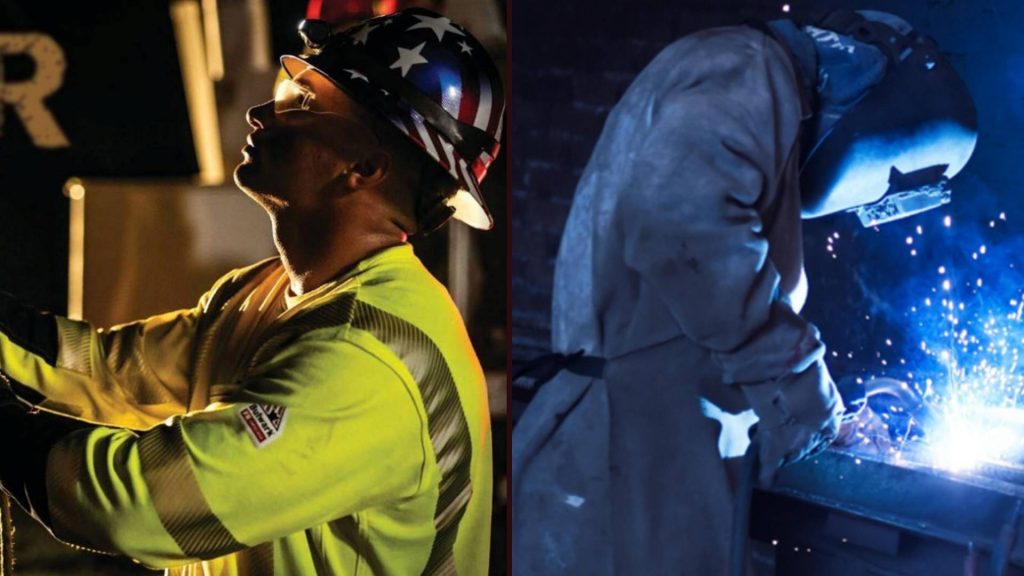Flame-Resistant vs. Arc-Rated Clothing: What Every Employer Needs to Know
There are critical differences between FR and AR garments — and the right choice can save lives.
Introduction and Why the Distinction Matters
If you manage a team that welds, grinds, works with molten metal, or repairs energized electrical equipment, you already know that safety isn’t optional. One wrong choice in protective gear can lead to catastrophic injuries. Yet one of the most common points of confusion in industrial safety apparel is the difference between flame-resistant (FR) clothing and arc-rated (AR) clothing.
At first glance, the two terms sound interchangeable. Both describe fabrics designed to protect workers from thermal hazards. Both are critical in high-risk environments. But here’s the truth: not all FR garments are arc-rated, and using the wrong one for the job can mean the difference between walking away from an accident — or not walking away at all.
In this article, we’ll break down what makes a garment flame-resistant, what arc rating really means, how to read garment labels, and best practices for keeping your crew protected and compliant.
What Is Flame-Resistant Clothing?
Flame-resistant clothing is the foundation of thermal hazard protection. At its core, FR clothing is engineered to resist ignition and self-extinguish when exposed to heat or flame. The goal is simple but critical: prevent the garment from igniting and continuing to burn.
If ordinary cotton or polyester catches fire, it can melt or continue burning against the skin, causing severe secondary injuries. FR clothing, by contrast, extinguishes itself once the heat source is removed — dramatically improving chances of survival.
How Manufacturers Achieve FR Protection
Today’s FR fabrics are developed in three main ways:
- At the Molecular Level
Synthetic fibers like Nomex®, Kevlar®, Twaron®, and Kermel® are engineered to be inherently flame resistant. Their molecular structure simply doesn’t support combustion. The protection is permanent and does not wash out. - At the Fiber Level
During fiber production, manufacturers add flame-retardant compounds directly into the fiber. Examples include FR modacrylics and FR rayon blends. This builds resistance into the fiber itself, making it long-lasting and durable. - At the Fabric Level
In this approach, base fibers such as cotton are chemically treated or mechanically finished after the fabric is woven. Common examples are FR cotton or 88/12 cotton/nylon blends. When done properly, these treatments are permanent and withstand repeated laundering.
Regardless of the method, the result is the same: a garment that resists ignition and prevents flame spread for the life of the product.
Where FR Clothing Is Used
Flame-resistant garments are essential in industries such as:
- Oil and gas (protection from flash fire)
- Foundries and metalworking (protection from molten metal splash)
- Welding and cutting (protection from sparks and hot debris)
- Firefighting support roles (secondary thermal hazard protection)
FR vs. AR: The Key Differences
Here’s the simple rule:
- All arc-rated garments are flame resistant.
- Not all flame-resistant garments are arc rated.
That’s because arc-rated clothing starts with FR properties but then undergoes specialized arc flash testing. If you’re in an environment where arc flash is a risk, a general FR garment isn’t enough — it must carry an arc rating on the label.
Comparison Table
Feature |
Flame-Resistant (FR) |
Arc-Rated (AR) |
| Protects Against | Flames, sparks, flash fire | Electrical arc flash + all FR hazards |
| Testing Standard | ASTM D6413 (vertical flame) | ASTM F1959 (arc rating) |
| Labeling | “Flame Resistant” | “Arc Rated” + cal/cm² value |
| Industries | Oil & gas, welding, foundries | Utilities, electrical, industrial plants |
| Compliance | OSHA 1910.269, NFPA 2112 | OSHA 1910.269, NFPA 70E |
See: How One Industrial Powerhouse Transformed Its FR Clothing Program.
Why Labels and Ratings Matter
For safety managers, reading the garment tag is non-negotiable. Here’s what to look for:
- “Flame Resistant” only → Suitable for flash fire, welding, or hot work. Not tested for arc flash.
- “Arc Rated” with cal/cm² → Certified for electrical arc flash. Safe for energized work.
- No rating → Not suitable for thermal hazards in industrial environments.
Too often, workers grab any garment marketed as “FR” without noticing whether it’s arc rated. This oversight can put lives at risk — and expose companies to OSHA citations, lawsuits, and downtime.
Best Practices for Employers and Safety Managers
Selecting the right protective apparel isn’t just about buying garments off the shelf. It’s about matching the clothing to the hazard.
- Conduct a Hazard Assessment
Identify whether your team is exposed to flame, flash fire, or arc flash — and at what intensity. - Match Ratings to Tasks
Use NFPA 70E tables or your own job hazard analysis to determine the correct caloric rating. Example:- Low-voltage panel work → 8 cal/cm² minimum.
- Transmission line maintenance → 25 cal/cm² or higher.
- Train Employees to Check Labels
Workers should know the difference between “FR” and “AR” at a glance. A quick look at the tag can prevent a major mistake. - Ensure Proper Care and Laundering
FR and AR garments should never be washed with bleach, fabric softeners, or high-heat drying, which can degrade protection. Train staff or use industrial laundering partners. - Consider a Managed Uniform Program
Many employers struggle with consistency, compliance, and cost. A managed program from Work Hard Dress Right simplifies everything:- Standardizes apparel across your workforce.
- Ensures every garment is hazard-appropriate.
- Provides embroidery, striping, and branding without compromising safety ratings.
- Reduces costs versus rental programs by up to 40%.
See: How a Custom Uniform Portal Could Save You Time, Money—and Frustration
The Bottom Line: Safety Starts with the Right Garment

FR fabrics are a triumph of modern textile engineering. Whether their protection comes from the molecular level (like Nomex®), the fiber level (like FR modacrylics), or the fabric level (like treated cotton), they are built to resist ignition and save lives.
But when the hazard is electrical arc flash, FR alone isn’t enough. The garment must also be arc-rated. Ignoring that distinction can lead to devastating consequences.
For employers, safety managers, and frontline workers alike, the rule is simple: always match the clothing to the hazard — and always read the label.
At Work Hard Dress Right, we help companies nationwide protect their teams with the right uniforms for the job, from arc-rated gear for utilities and electrical crews to flame-resistant workwear for oil, gas, and welding environments.
Protect Your People
Need help selecting the right protective apparel for your crew? Work Hard Dress Right provides custom uniform solutions, safety program support, and managed apparel services that make compliance simple — and keep your team safe, professional, and confident.
Contact us today to learn more about our flame-resistant and arc-rated uniform programs.

